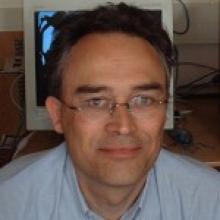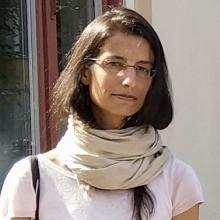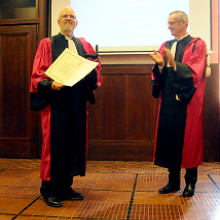Bioinformatics, Phylogeny and Evolutionary Genomics Group
Members
Maîtresse de conférences
UCBL
Tel: 04 72 44 84 87

Professeure des universités
UCBL
Tel: 33 04 26 23 44 76
Doctorante
UCBL
Enseignant-chercheur CPJ
UCBL

Directeur de recherche
CNRS
Tel: 33 04 72 44 62 97
Doctorant
CNRS

Professeur d'université émérite
UCBL
Tel: 04 72 44 85 60
Ingénieur d'études CDD
CNRS

Directeur de recherche
CNRS
Tel: 33 04 72 43 11 67

Maîtresse de conférences
UCBL
Tel: 33 04 72 43 29 18
Doctorante
UCBL

Chargée de recherche
CNRS
Tel: 33 04 72 44 85 60

Directeur de recherche
CNRS
Tel: 04 72 44 84 87

Chargée de recherche
CNRS
Tel: 04 72 43 13 44

Directeur de recherche
CNRS

Maître de conférences
UCBL
Tel: 04 72 43 35 83

Chargée de recherche
CNRS
Tel: 04 72 44 81 42
Doctorant
CNRS

Directeur de recherche
CNRS
Tel: 33 04 72 44 62 96

Chargée de recherche
CNRS
Tel: 04 72 43 26 28
Doctorant
UCBL

Chercheur invité
UCBL
Our group focuses on two main axes: phylogenomics (i.e. the inference of evolutionary history based on genomics data) and evolutionary genomics (understanding the molecular and population processes that drive genome evolution). We see genomes both as a subject of research (how do genomes evolve, why are they structured the way they are?), but also as a main source of empirical knowledge about the macroevolutionary patterns (what do they tell us about the history of life on Earth?), or about the phenotypes and life-history strategies of organisms. Our works heavily rely on methodological developments (bioinformatics, modeling and statistical inference).
Evolution of genome architecture and expression
Genomes are the result of a long-term evolutionary process, shaped by multiple evolutionary forces. Some genomic features are adaptive (i.e. are beneficial for the fitness of organisms), others result from non-adaptive processes (random drift and biased gene conversion - BGC) or are caused by conflicts between multiple levels of selection (e.g. meiotic drive or the spread of selfish genetic elements). We explore different aspects of genome architecture (base composition landscapes, genome structure and size, impact of transposable elements, …) or functioning (gene expression, lncRNAs, epigenetic landscapes, …), and try to disentangle the relative contribution of adaptive and non-adaptive processes to their evolution. For this purpose, we consider both the molecular mechanisms (mutation, repair, recombination) and the population processes (selection, drift, BGC, …) that shape genetic variation.
Phylogenomics
We are interested in reconstructing the history of life on Earth. This research unfolds along several axes. First, we develop phylogenomic databases of aligned genetic sequences (e.g. BIBI, RiboDB or HOGENOM). Second, we conduct methodological research on how to accurately reconstruct deep phylogenies, infer divergence times, reconstruct ancestral genetic sequences, gene repertoires and life-history traits. This methodological work is translated into publicly available software programs (e.g. SeaView, PhyloBayes, Coevol). Finally, we apply these approaches to several important problems, among which: reconstructing the phylogeny of animals, of archaea, or the global tree of life; using phylogenies and ancestral gene repertoires to investigate the evolution of complex systems and the emergence of molecular and cellular functions in the three domains of life; reconstructing ancestral genetic sequences, a research activity that has industrial and biotechnological applications.
Teaching and outreach
We teach at University Lyon 1 (Master Bioinfo@Lyon), INSA, ENS Lyon, we organize bioinformatics internships. We regularly give conferences on evolution (tree of life, human evolution, genetic diversity, …).
Prospective students and postdocs are invited to apply, as we often welcome visitors for internships or research projects.
Keywords: Molecular evolution and Population Genomics; Phylogenomics; Computational Genomics; Comparative genomics; Bioinformatics; Statistical inference.
Publications
Display of 301 to 330 publications on 1109 in total
Sex-specific genetic diversity is shaped by cultural factors in Inner Asian human populations
American Journal of Physical Anthropology . 162 ( 4 ) : 627-640
DOI: 10.1002/ajpa.23151
Journal article
see the publicationLatitude as a co-driver of human gut microbial diversity?
BioEssays . 39 ( 3 ) : 1600145
Journal article
see the publicationMareyMap online: A user-friendly web application and database service for estimating recombination rates using physical and genetic maps
Genome Biology and Evolution . 9 ( 10 ) : 2506-2509
DOI: 10.1093/gbe/evx178
Journal article
see the publicationThe global impact of Wolbachia on mitochondrial diversity and evolution
Journal of Evolutionary Biology . 30 ( 12 ) : 2204-2210
DOI: 10.1111/jeb.13186
Journal article
see the publicationThe Red Queen model of recombination hot-spot evolution: a theoretical investigation
Philosophical Transactions of the Royal Society B: Biological Sciences .
Journal article
see the publicationd18O-Derived incubation temperatures of oviraptorosaur eggs.
Palaeontology . : 1-15
DOI: 10.1111/pala.12311
Journal article
see the publicationThe growing tree of Archaea: new perspectives on their diversity, evolution and ecology
The International Society of Microbiologial Ecology Journal . 11 ( 11 ) : 2407-2425
Journal article
see the publicationImproved Modeling of Compositional Heterogeneity Supports Sponges as Sister to All Other Animals
Current Biology . 27 ( 24 ) : 3864-3870.e4
Journal article
see the publicationEvolutionary strata on young mating-type chromosomes despite the lack of sexual antagonism
Proceedings of the National Academy of Sciences of the United States of America . 114 ( 27 ) : 7067-7072
Journal article
see the publicationWidespread selective sweeps throughout the genome of model plant pathogenic fungi and identification of effector candidates
Molecular Ecology . 26 ( 7 )
DOI: 10.1111/mec.13976
Journal article
see the publicationTEtools facilitates big data expression analysis of transposable elements and reveals an antagonism between their activity and that of piRNA genes
Nucleic Acids Research . 45 : 13
DOI: 10.1093/nar/gkw953
Journal article
see the publicationOn the rarity of dioecy in flowering plants
Molecular Ecology . 26 : 1225-1241
DOI: 10.1111/mec.14020
Journal article
see the publicationIn vivo binding of PRDM9 reveals interactions with noncanonical genomic sites
Genome Research . 27 ( 4 ) : 580-590
Journal article
see the publicationRecombination, meiotic expression and human codon usage
eLife . 6 : e27344
Journal article
see the publicationIsoSel: Protein Isoform Selector for phylogenetic reconstructions
PLoS ONE . 12 : e0174250
Journal article
see the publicationRecord of Nile seasonality in Nubian neonates.
Isotopes in Environmental and Health Studies . 53 ( 3 ) : 223-242
Journal article
see the publicationStrain-specific estimation of epidemic success provides insights into the transmission dynamics of tuberculosis
Scientific Reports . 7 : 45326
DOI: 10.1038/srep45326
Journal article
see the publicationThe CO dehydrogenase accessory protein CooT is a novel nickel-binding protein.
Metallomics . 9 ( 5 ) : 575-583
DOI: 10.1039/c7mt00063d
Journal article
see the publicationEvolutionary history of LTR-retrotransposons among 20 Drosophila species
Mobile DNA . 8 : 7
Journal article
see the publicationA newly evolved W(olbachia) sex chromosome in pillbug!
Peer Community In Evolutionary Biology .
Journal article
see the publicationContinental-level population differentiation and environmental adaptation in the mushroom Suillus brevipes
Molecular Ecology . 26 ( 7 ) : 2063-2076
DOI: 10.1111/mec.13892
Journal article
see the publicationThe sunflower genome provides insights into oil metabolism, flowering and Asterid evolution
Nature . 546 ( 7656 ) : 148-152
DOI: 10.1038/nature22380
Journal article
see the publicationThe Evolution of Sex Chromosomes and Dosage Compensation in Plants
Genome Biology and Evolution . 9 : 627-645
DOI: 10.1093/gbe/evw282
Journal article
see the publicationThe fitness cost of mis-splicing is the main determinant of alternative splicing patterns
Genome Biology . 18 : 208
Journal article
see the publicationLess effective selection leads to larger genomes
Genome Research . 27 : 1016-1028
Journal article
see the publicationNew Insights into the Classification and Integration Specificity of Streptococcus Integrative Conjugative Elements through Extensive Genome Exploration
Frontiers in Microbiology . 6 ( 6 ) : 1483
Journal article
see the publicationA glimpse into an unexplored world: very high diversity of integrative and mobilizable elements in Streptococci
8th ASM conference on Streptococcal Genetics .
Poster
see the publicationA genomic history of Aboriginal Australia
Nature . 538 ( 7624 ) : 207-214
DOI: 10.1038/nature18299
Journal article
see the publicationThe Complex Admixture History and Recent Southern Origins of Siberian Populations
Molecular Biology and Evolution . 33 ( 7 ) : 1777-1795
Journal article
see the publicationRefining the Y chromosome phylogeny with southern African sequences
Human Genetics . 135 ( 5 ) : 541 - 553
Journal article
see the publication
